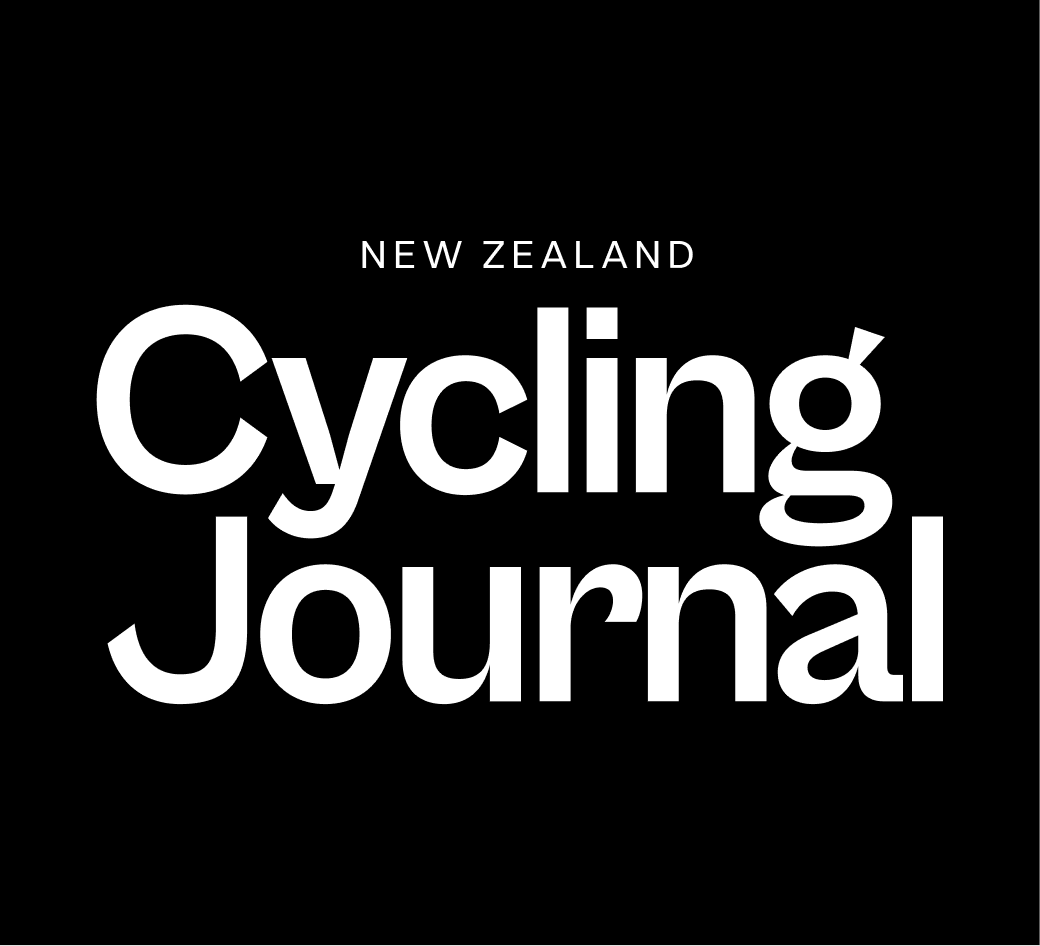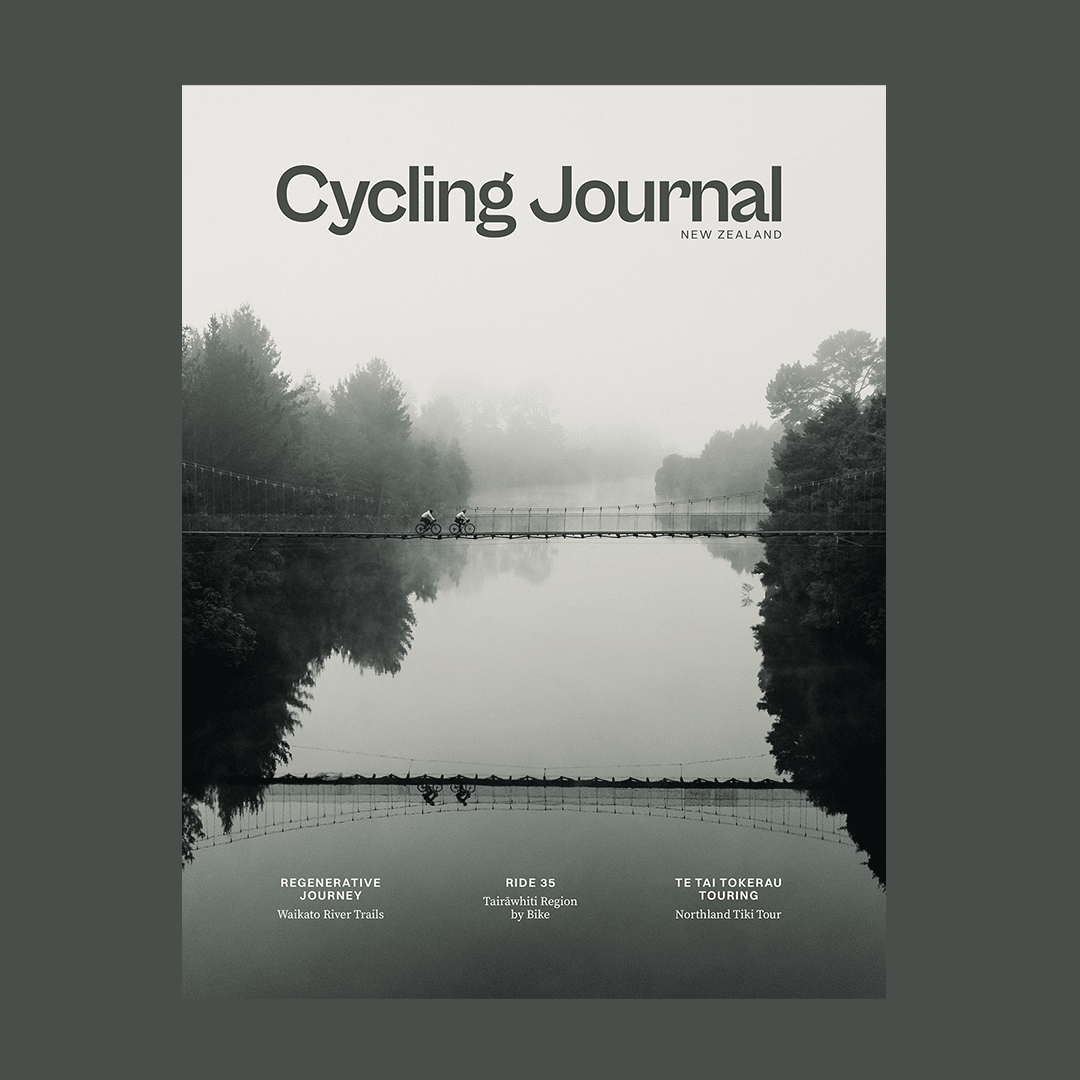Words by Liam Friary
Images by Cameron Mackenzie
There’s something profoundly restorative about stripping away the complexities of modern life and immersing yourself in the rhythmic simplicity of pedalling through nature. Our initial plan was uncomplicated: escape for three days traversing the Waikato River Trails, riding from the north end to the south and back again—a clean, self-contained loop that eliminated logistical headaches.
The late autumn mornings greeted us with a theatrical display. Calm, clear conditions painted the landscape with blankets of fog that hung mysteriously over the Waikato River, creating an eerie atmosphere.
The warmth of summer had disappeared and the crisp air demanded strategic layering. Often in the shoulder months it’s hard to strike the right balance between warding off the morning chill and preparing for the inevitable warmth that comes with sustained pedalling.
The morning mist had almost subsided as we traversed the iconic Arapuni suspension bridge which offered views of the dam structure and dramatic gorge below. The bridge was built nearly a century ago for dam workers commuting from Arapuni village. The Arapuni hydro station, which is run by Mercury, sits below the bridge and provides power back to the main grid. Our effort for the multi- day ride would be nothing compared to what the workers encountered whilst building the dam in 1929.
As we rolled through the trail, the autumnal transformation was in full effect—golden poplars lined sections of the riverbank, their fallen leaves creating natural confetti on the trail. The trail south, soon revealed itself as surprisingly technical in sections, and we spend a few hours on singletrack winding through forest patches, enjoying the occasional rowdy descent that tested our gravel bike handling skills, and tight corners that rewarded precise line choices. It wasn’t the manicured pathway some might expect, however, that meant we had to stay present at all times.
It wasn’t long before the sun’s heat started to evaporate as we headed towards the late afternoon. Dense native forest sections were dark and meant we had to flick on our lights to see the track ahead.
The trail surface kept changing and, more often than not, kept going up without much down. Dusk fast approached, and the temperature plummeted, as we made our last scramble to our accommodation. The streetlamps of Mangakino flicked on, and we knew we were getting close. A warm shower and a plate of hot food soon provided some much-needed home comforts after a long day.
There’s always an order of affairs when taking on a multi-day ride. There’s the break-in period, where your body needs to acclimatise to riding for longer periods, back-to-back. Then there’s remembering how to pack and unpack efficiently. But, by the second day, something just clicks as the day lingers on. The legs remember their strength, the mind settles into a meditative state, and the body starts to want the effort.
The fog had a strong grip on Mangakino and, as I pulled back the ranch slider, I was greeted by the morning air. There was no rush to depart early – we couldn’t see much anyway. I flicked on the kettle and scrambled some eggs. It was around mid-morning by the time we rolled out, and the fog was still thick; the brisk temperature had warmed slightly. The trail out the door flowed well, and we chatted away, decluttering our mind from the busy-ness of our daily lives. The river corridor constantly changes, and the trail never gets dull. We approached the mysterious Mangakino Swing Bridge, where the line between water and sky isn’t clearly defined. Soon we rolled up to Whakamaru Bakery, an essential refuelling stop—unpretentious and perfect. Their savoury pies and toasties provided us much-needed sustenance for the ride ahead.
The trail crosses over Whakamaru hydro station, which grabs your attention with its distinctive dam structure. This facility, commissioned in 1956, generates renewable energy and, as we rode alongside its reservoir, the morning mist created an atmosphere around the engineered structure.
Pedalling along the trail, you’ll encounter five of Mercury’s nine hydroelectric hydro stations, all harnessing the Waikato River’s natural force. These are real engineering feats—the scale of them is impressive. The generation sites utilise the gravitational flow from the headwaters of Lake Taupō, down through to Arapuni.
Travelling slowly past these hydro stations made me appreciate where our power comes from, and the post-war era of harnessing some of our natural resources is still evident today. As an avid outdoor enthusiast, riding past these hydro stations, there’s an internal struggle in my mind between the beauty of nature and the necessity of man-made concrete structures. There’s a delicate balance between power generation and protecting our environment, and with more and more electronics being so widely used, getting electricity from renewable sustainable resources is welcomed.
The steep surrounds of the Whakamuru Bluffs shape the landscape, their sheer faces carved by millennia. Lake Ātiamuri provides a stunning backdrop for the rest of the trail. The calm day provided glass-like lake conditions, and the gradient of the trail flattened as our pace went up. The dramatic Pohaturoa Rock—a volcanic “plug” formation—took centre stage in the distance, and I was lost in the moment riding this section. The pace was perhaps too high to sustain, but just enough to ensure we’d finish before darkness set in. The short autumn days don’t leave much room for error.
The last day was a return back from Ātiamuri to Arapuni, which made for a rather long transfer, but we’d soon be back to regular life and would rather this than that. Besides, it was a chance to take in all the spots we’d missed on the way to Ātiamuri, one of which was a stand-out stop called the Rhubarb Cafe, which had been closed on our way through. Luckily, we’d checked the sign hanging in the window and knew it would be open on our way back, so the pace was on to get there before they shut. The cute and charming café offered us a home-baked haven and represented the best of small-town hospitality.
Our three days of riding was a real separation from the mundane day-to-day of regular life; email notifications, meeting schedules, and domestic obligations faded into irrelevance. These are all replaced by much simpler concerns: weather, packing, food, trail surface, gradient, sleep—and repeat. This is the recalibration I yearn for more and more these days; the journey represents a physical effort and a mental transition into a better state of being.
We completed our loop, returning to our starting point with spirits high and legs tired; the Waikato had worked its quiet magic on us. The natural environment, flowing waters and human innovations make it unique, and it’s fascinating to see how the Waikato River harnesses actual power in a renewable way. The morning mists, bridge crossings, dense native forests and variety of the trail made it special. It seems getting back to the basics of movement, connection and days spent in the outdoors, are truly regenerating for us all.
Produced in partnership with Mercury.

















